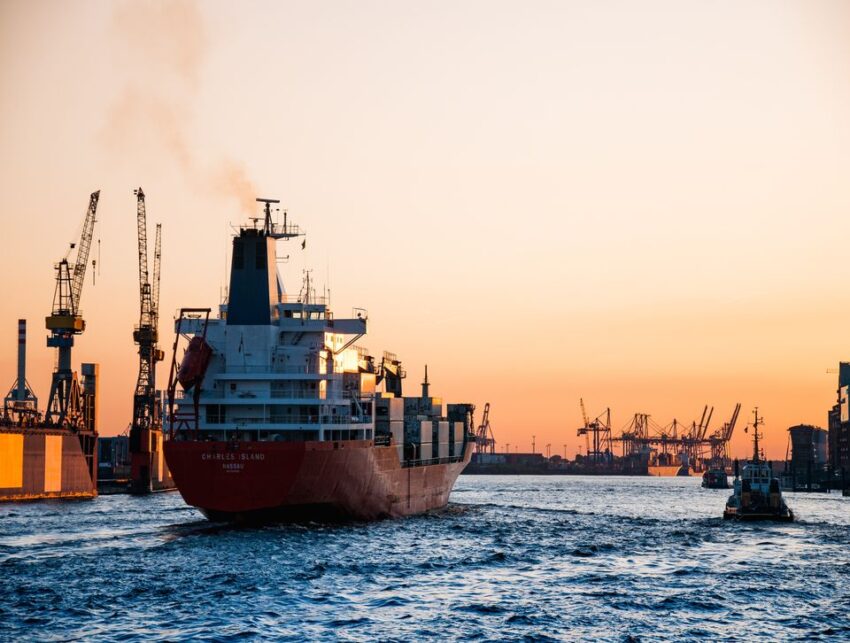
Shipping hazardous cargo demands more caution and attention to detail than the movement of regular cargo. Moreover, the ever-changing procedures and paperwork related to dangerous goods have further complicated the shipping process of these shipments. Additionally, hazardous cargoes are subjected to stringent customs and regulatory requirements where even the slightest error in packing and documentation could result in the rejection of the cargo by the transport authorities.
In this post where we have talked about several useful tips you need to keep in mind while shipping hazardous goods.
Which shipments fall under the category of hazardous cargo?
Hazardous cargo refers to those articles and materials that constitute a significant risk to people, property, and the environment when moved in bulk quantity. These kinds of cargo can come in several forms including solid liquid and gas. Not only explosives, chemicals, or inflammable substances but even items of everyday use like batters, perfume, liquor, aftershave, and hair spray fall under the dangerous goods (DG) category. They can be classified into the following categories based on their properties:
- Gases
- Explosives
- Inflammable liquids
- Inflammable solids, spontaneously flammable substances, and dangerous when wet items
- Oxidizing materials, organic peroxide
- Radioactive material
- Toxic, infectious materials,
- Materials with poison inhalation hazard
- Corrosives materials
- Miscellaneous hazardous material
Things independent freight forwarders should remember before shipping hazardous goods
-
Know your dangerous goods
Independent freight forwarders shipping dangerous goods need to have a thorough knowledge of about the requirements to be met before moving these items. For example, it is important for them to have a sound knowledge of the nature of the cargo they are handling, the inherent risks they pose, the paperwork required, and the regulations involving its transportation. The rules of moving DG vary according to the mode of shipment. Therefore, independent freight forwarders need to have a solid knowledge of the shipping guidelines for each particular mode of transportation.
-
Be mindful of the packaging
The port and the airport staff carefully inspect the hazardous cargo for leaks, breakages, or any other compromise in the integrity of the package. Even the slightest packaging error could result in potential disasters. Therefore, freight forwarding companies need to follow international standards and protocols for moving these kinds of cargo. Moreover, the forwarder needs to abide by the national transportation packaging guidelines for the domestic movement of DG. Shipping DG to foreign territories involves complying with the International Maritime Dangerous Goods Code. Ignoring this could result in hefty penalties for the distributor.
If hazardous and non-hazardous cargo is put in the same container then the hazardous goods should be packed close to the door of the container so that they can be quickly removed in the case of an emergency. Skimping on packaging expenses with regard to dangerous goods usually results in additional expenses, damages, penalties, and accidents.
-
Proper training
This is the first and foremost thing freight forwarders dealing with DG need to focus on. Dangerous cargo is a specialized sector that requires a lot of training on the part of the handlers. This is the most important factor that can prevent disasters from happening. The person in charge of handling the goods needs to obtain a TDG (Training in Dangerous Goods) certificate. This certification determines that the person has knowledge and experience of all topics related to DG and has gone through extensive training regarding the movement of hazardous cargo.
-
Pay attention to labeling
Proper labeling is a legal requirement when it comes to moving hazardous cargo. To begin with, they indicate the dangerous nature of the cargo and carry important information about how the cargo needs to be handled. Therefore, the labeling should be done in a way that immediately identifies the cargo and communicates the kind of hazard it entails. The label should appear on the packaging and never on a corner of the package when it folds. Apart from the label, freight forwarding companies also need to place additional identifiers such as placards and markings. The placards are larger than the label and are often stuck on vehicles, containers, and cylinders. The markings that are pasted on the outer packaging come with the weight, precautions, emergency response guidelines, etc.
Another important component of the label is the UN identification number that allows for easy segregation of the cargo. This number should ideally be placed close to the label identifying the shipment. There is a different class of orientation labels for dangerous liquid shipments since they involve another kind of handling. The UN certification label is a crucial component of the packaging of DG. This label proves that the shipment has met all the standards set by the UN. Independent freight forwarders need to abide by the UN guidelines and provide all the required labels for smooth and safe transportation of the cargo.
-
Right storage
The storage of toxic materials is yet another area that requires special attention. Companies that specialize in moving DG should ensure that the storage area comes with warning signs. Additionally, the storage area should not have any obstructions, and should only be accessible to trained and authorized personnel. Before storing DG, a proper inspection of all the incoming containers is required. This should be done to ensure that all the boxes are intact and labeled.
-
Right documentation
The shipping of dangerous goods involves several documents such as DG Request, Material Safety Data Sheet, DG packing list and declaration, DG Manifest and many more depending on the kind of cargo you’re shipping, the country where you are shipping and the mode of transportation. Each class of dangerous goods poses a particular hazard, necessitates particular handling requirements and requires unique documentation. The basic information that you need to incorporate in the documentation are the PSN and the UN Number, the Hazard Class, the name and address of the consignee, the quantity and weight of the cargo, the number of containers/cartons/cylinders, and the kind of packaging.
The Material Safety Data Sheet enumerates the details of the shipment that needs to be included in the DG Request when the request for dangerous goods is sent to the shipping line. Once the cargo is packed, you as the independent freight forwarder must make sure that the details are verified while submitting the Declaration to the shipping line. This step is crucial since these details are important for placing the cargo in the proper slot within the ship.
Independent freight forwarders need to be very careful and pay attention to the details so as to prevent the slightest mistake. Therefore, it is extremely important to double-check everything to avoid the chances of human error. Being a little more attentive to the transportation process of hazardous goods could prevent potential disasters, loss of lives and property, damage to the environment.


